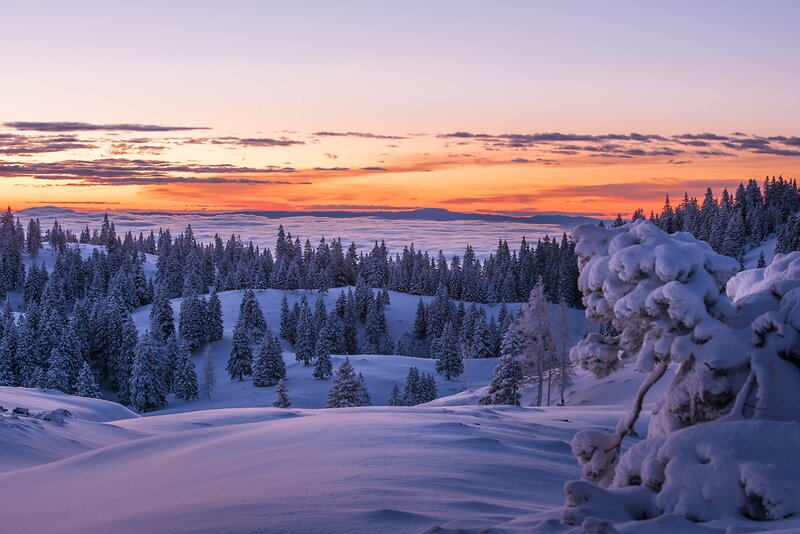THE BEAUTIFUL WORLD OF THE JULIAN ALPS
Breath in fresh mountain air and absorb the sparkling beauty of the landscape between the Julian Alps and the Triglav National Park
.
.
.
.

THE BEAUTIFUL WORLD OF THE JULIAN ALPS
Breath in fresh mountain air and absorb the sparkling beauty of the landscape between the Julian Alps and the Triglav National Park

A high alpine plateau partly located in the Triglav National Park is perfect for you to experience a winter idyll. The magnificent backdrop of the Julian Alps and mighty snow-covered spruces are breathtaking. Enjoy the tranquillity of the mountains.
Pokljuka is a forested high karst plateau in the Julian Alps. It is the largest closed forest area in the Triglav National Park. It is 20 km long and almost as wide. In a span from 1000 to 1400 m there are around 6300 ha of forests, in which spruce prevails.
Pokljuka is one of the best known Slovenian plateaus, as it holds world famous biathlon competitions. The plateau is mostly forested; In wintertime, Pokljuka is normally covered with a thick sheet of snow.
The Šijec peat bog is interesting for its great ecological significance and providing shelter to many animals and plants. A rugged surface of hidden shafts, overgrown potholes, dolines and valleys is a remnant of the activity of the Pokljuka glacier. It left behind the Pokljuka bogs and marshy, difficult to pass forest areas. The bogs belong to the most southern high bogs in Europe.

To a visitor appreciating well-preserved nature, calmness, beautiful views and tradition, Pokljuka can offer unforgettable experience all the year round and during all the seasons. The sun, pure air, low relative humidity and bearable summer temperatures maka Pokljuka one of the natural health resorts. Walking on forest paths, watching fauna and flora or cycling on never-ending forest paths will restore your mental and physical shape. Let our cultural attitude ensure that such reaches will also be available to the future generations.
Pokljuka serves as a gateway to numerous monutain paths leading into the hogh mountains of the Julian Alps, amongst them alsto to Slovenia’s highest peak Triglav. Over many ancient alps lying on the fringes of the vast forest area, cattle are still being herded nowadays wanderers can always refresh themselves with a glass of home-made sour milk, cottage cheese ot they can even taste butter or cheese made just there in the alps. Althought each alp has a character of its own, their common feature is shingle-covered wooden cottages, carefully embedded in the natural environment.
Production of charcoal in charcoal kilns is an old tradition recently revived for tourists, reminding one of the events from the not-so-far 19. century when charcoal was the principal power source used in smelting furnaces for iron ore.

Why Rudno polje?
Rudno Polje is an area on the Pokljuka Plateau. In the 16th century, iron ore was mined and smelted in Pokljuka, and Rudno Polje (literally English meaning: ore field) has been named after its location.
The iron ore was mined in the whole Pokljuka area, and in addition, for almost 3000 years, Julian Alps were also an important strategic area because of rich and high quality iron deposits. Ferrous metallurgy is documented as early as in the Iron Age (800 B.C.), and reached the peak in Roman Era and in Middle Ages.
In the past, the Pokljuka was overgrown with beech-fir forest and alpine spruce. Most of the beech trees were cut down about 200 years ago, as they made charcoal for many ironworks in Bohinj, and later on, the afforestation included mainly spruce trees, which is why Pokljuka is now covered by coniferous forests.

